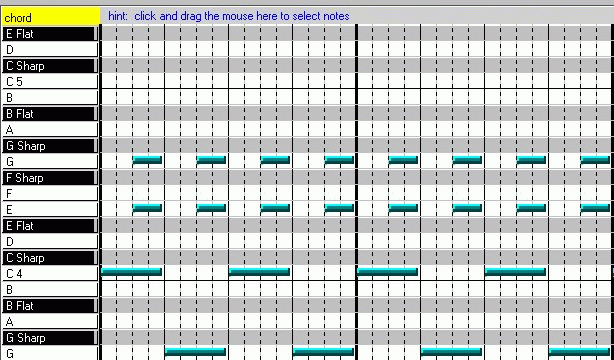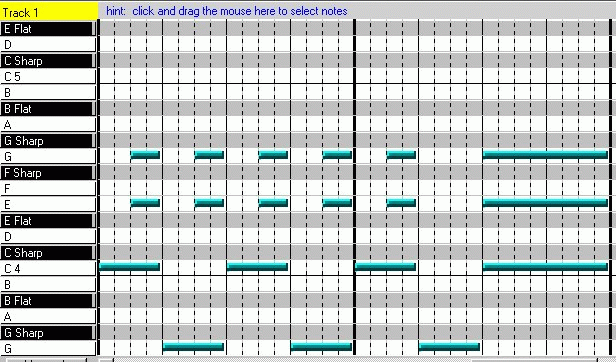Chords are used to help keep rhythm, sometimes counter the melody, and many times set a mood. Since chords are several harmonious notes being played at the same time, they also they help fill out the sound. This song has only one chord: "C major." A review of the Chords section will show that a C major chord is made of the three notes: C, E, G.
- Go ahead and create a new Instrument track, and name it "Chords."
- Choose an instrument. In the real world, not all single instruments are capable of playing chords. Some instruments are monophonic which means that they can only play one note at a time. For example, since horns are monophonic, you would need two or more instruments to play a chord. On the other hand, stringed instruments and keyboards are polyphonic and can play chords. I am going to use Acoustic Guitar.
- Click Add Sounds and set the lowest note to 'G3' with a range of at least 18.
Now, try to visualize how a guitar might sound strumming along with this song. I can picture the thumb hitting the low strings, and fingers strumming the high strings. Thumb-fingers- thumb-fingers etc. How would this look on our Piano Roll grid? Try entering the notes below, using 1/4 notes for the lower notes, and 1/8 notes for the higher ones.


For measures 7 & 8, paste in the first part. Now play back the whole song. How does it sound? Do you think it ends rather abruptly? Maybe we can fix that. Try entering the notes shown below. In the last measure, we stop playing rhymically and just let the notes sustain. This helps resolve the song...by musically saying Ta-Daaaaa!

Now we are almost done. Lets put some finishing touches on the drum and bass parts.